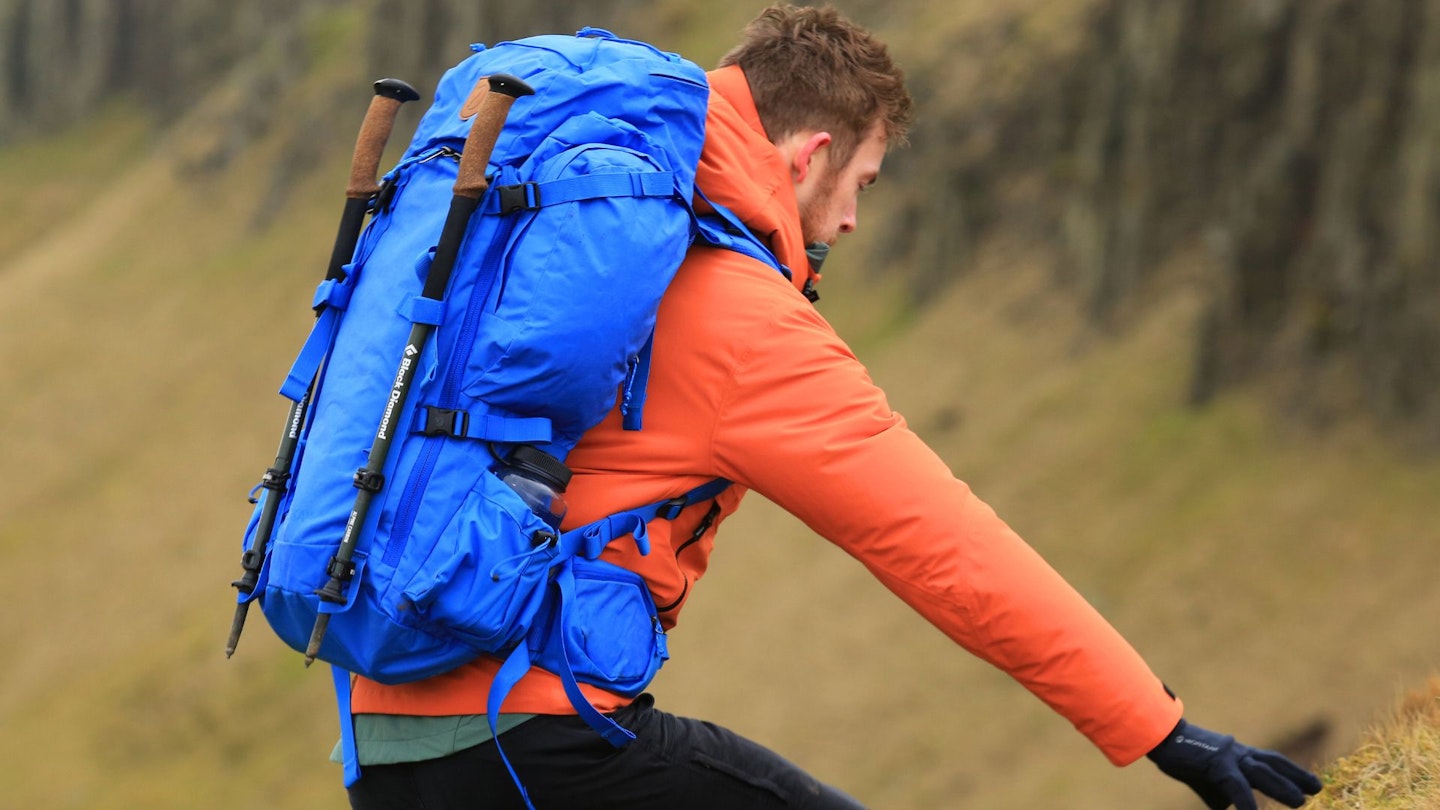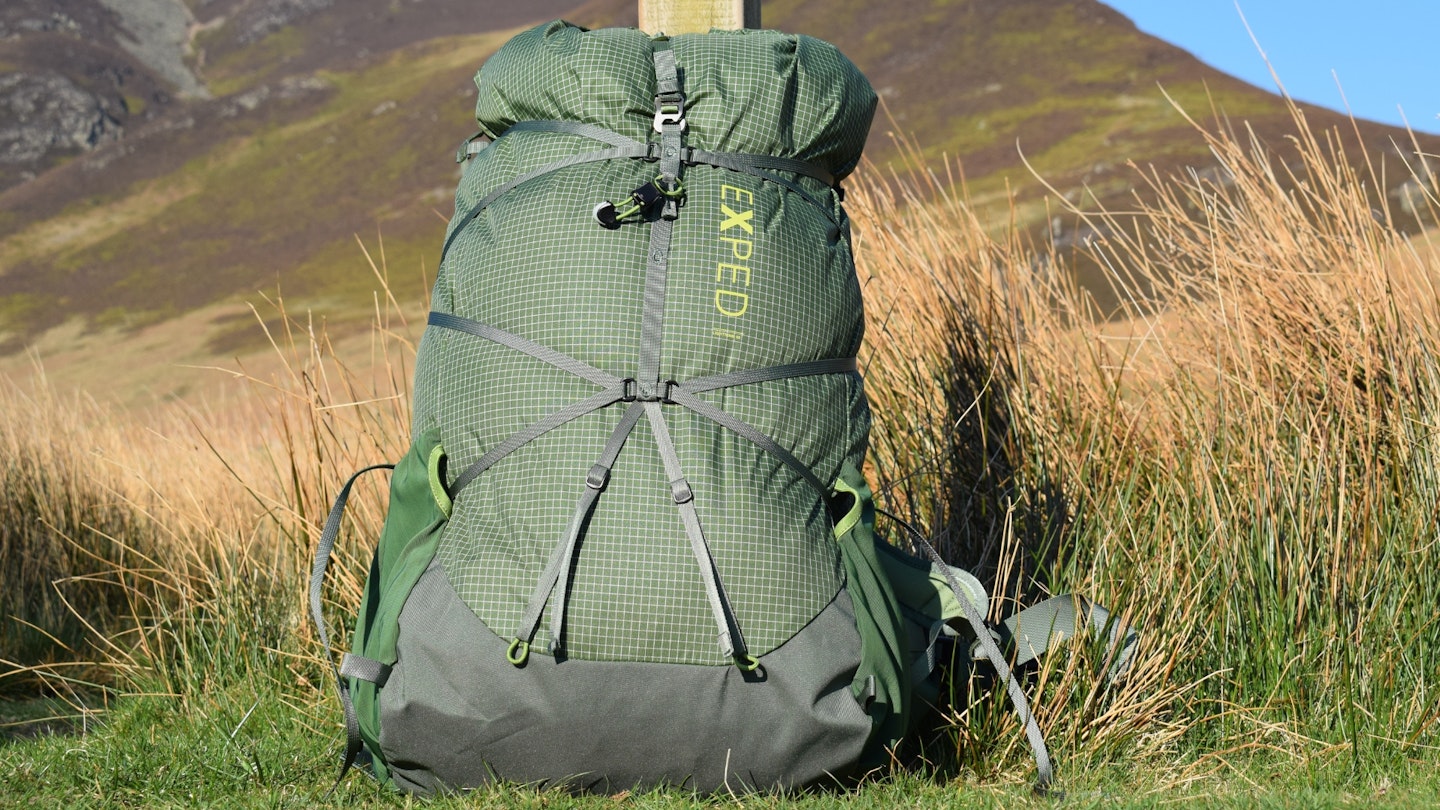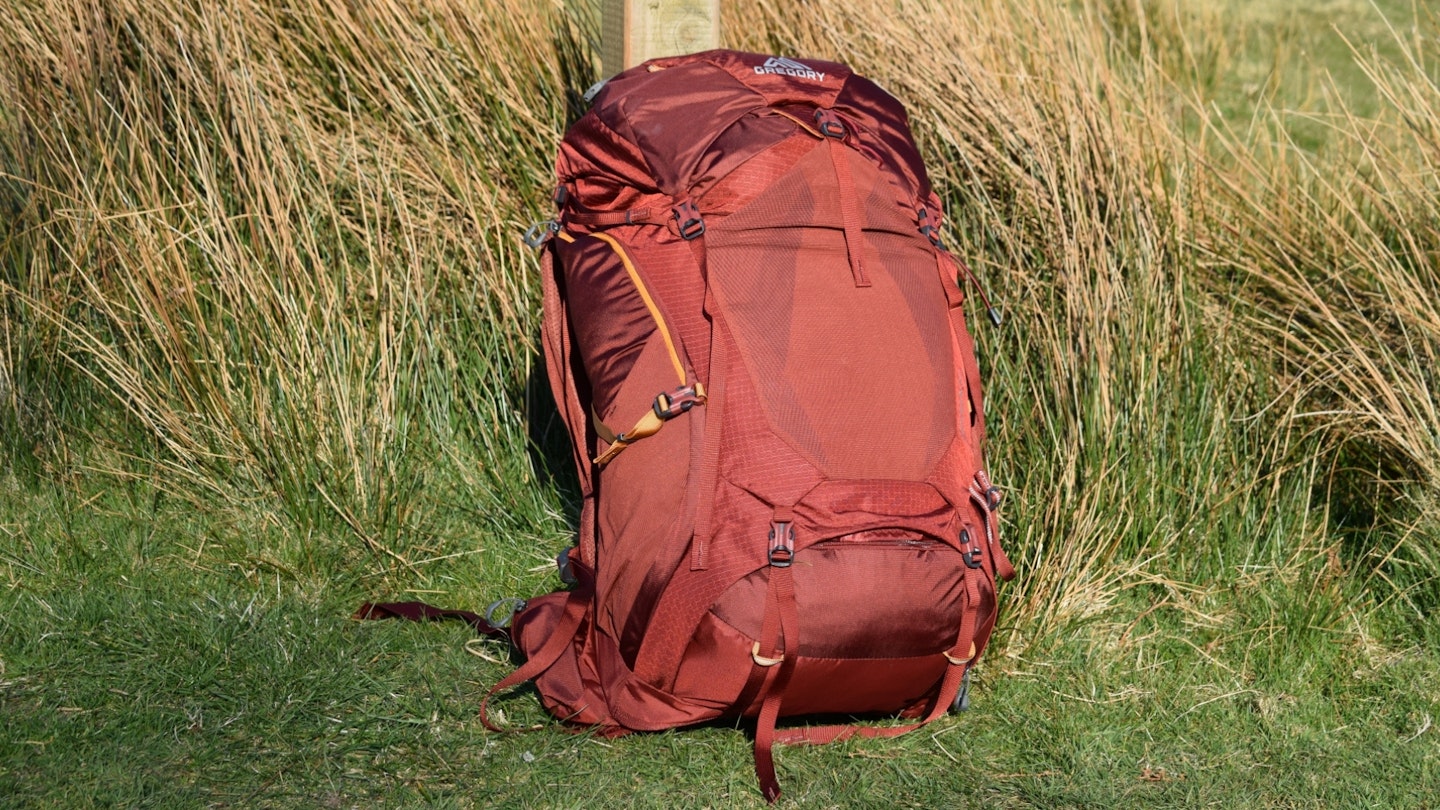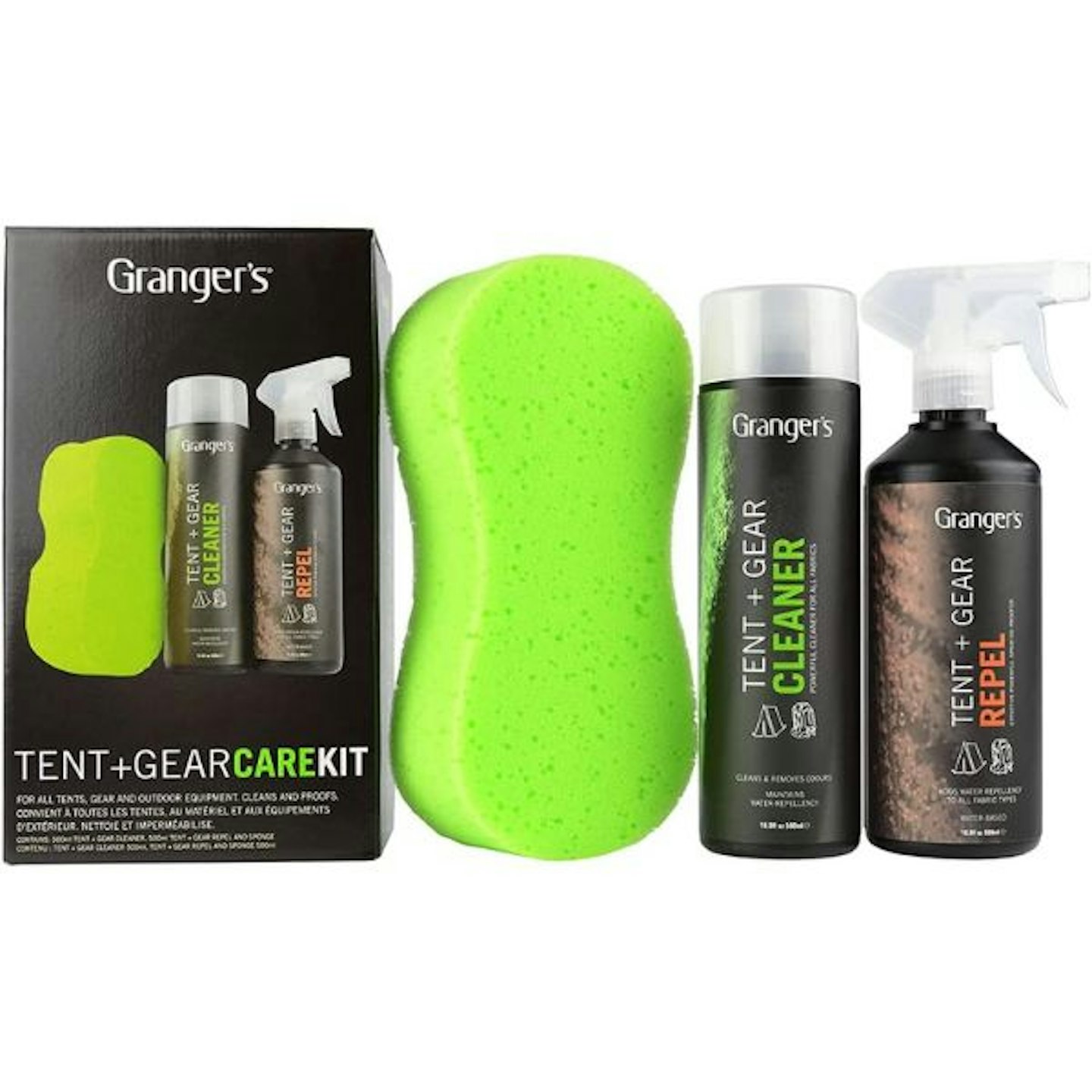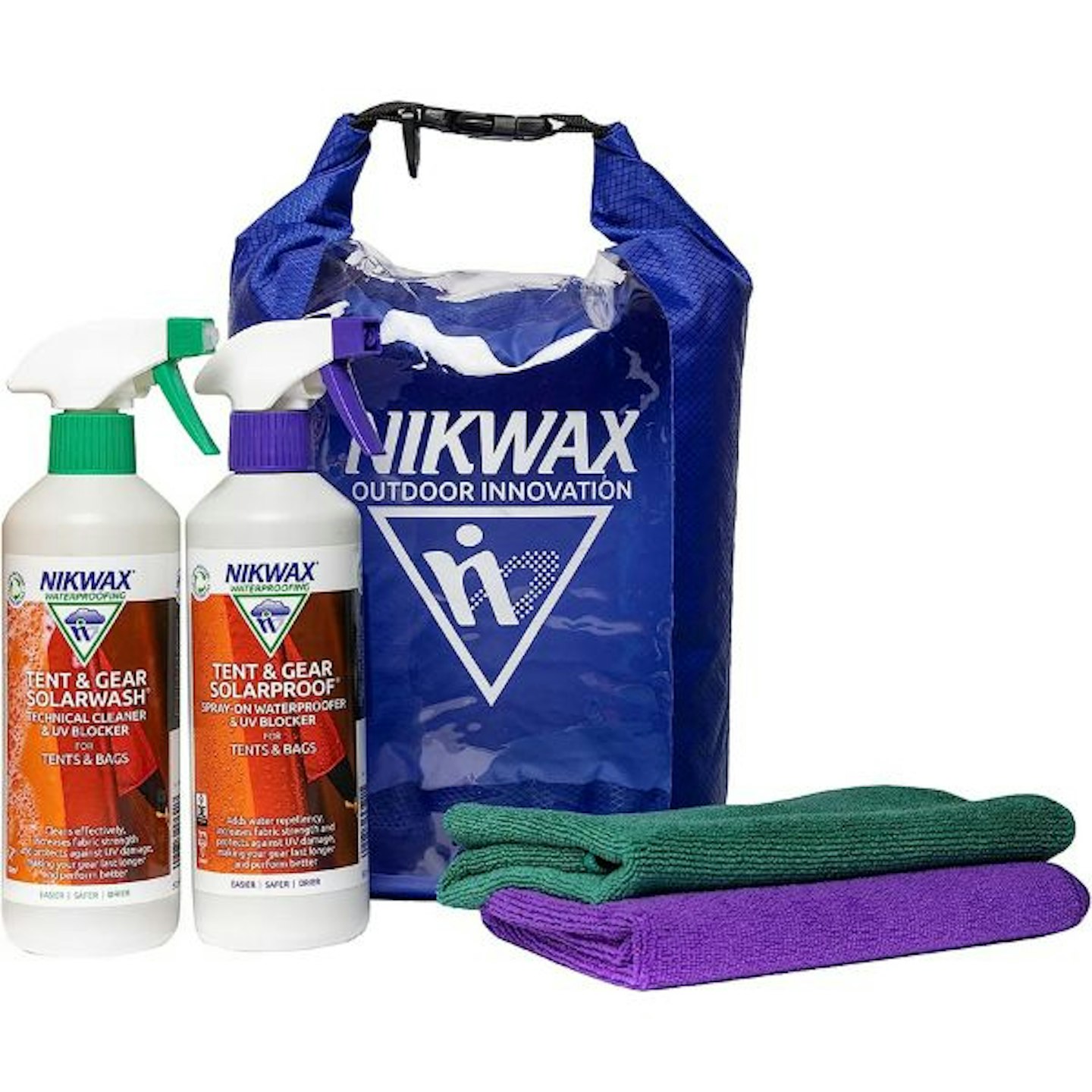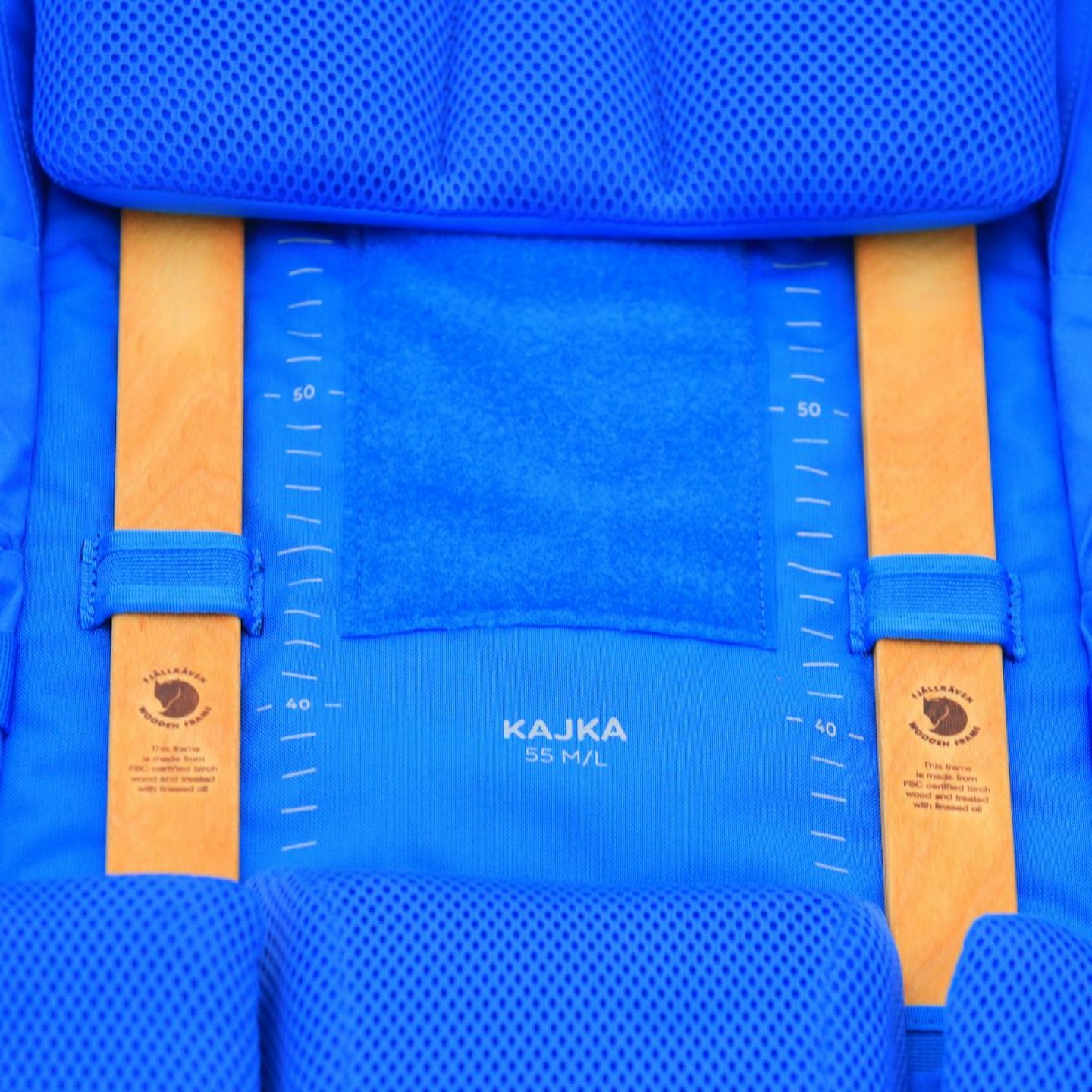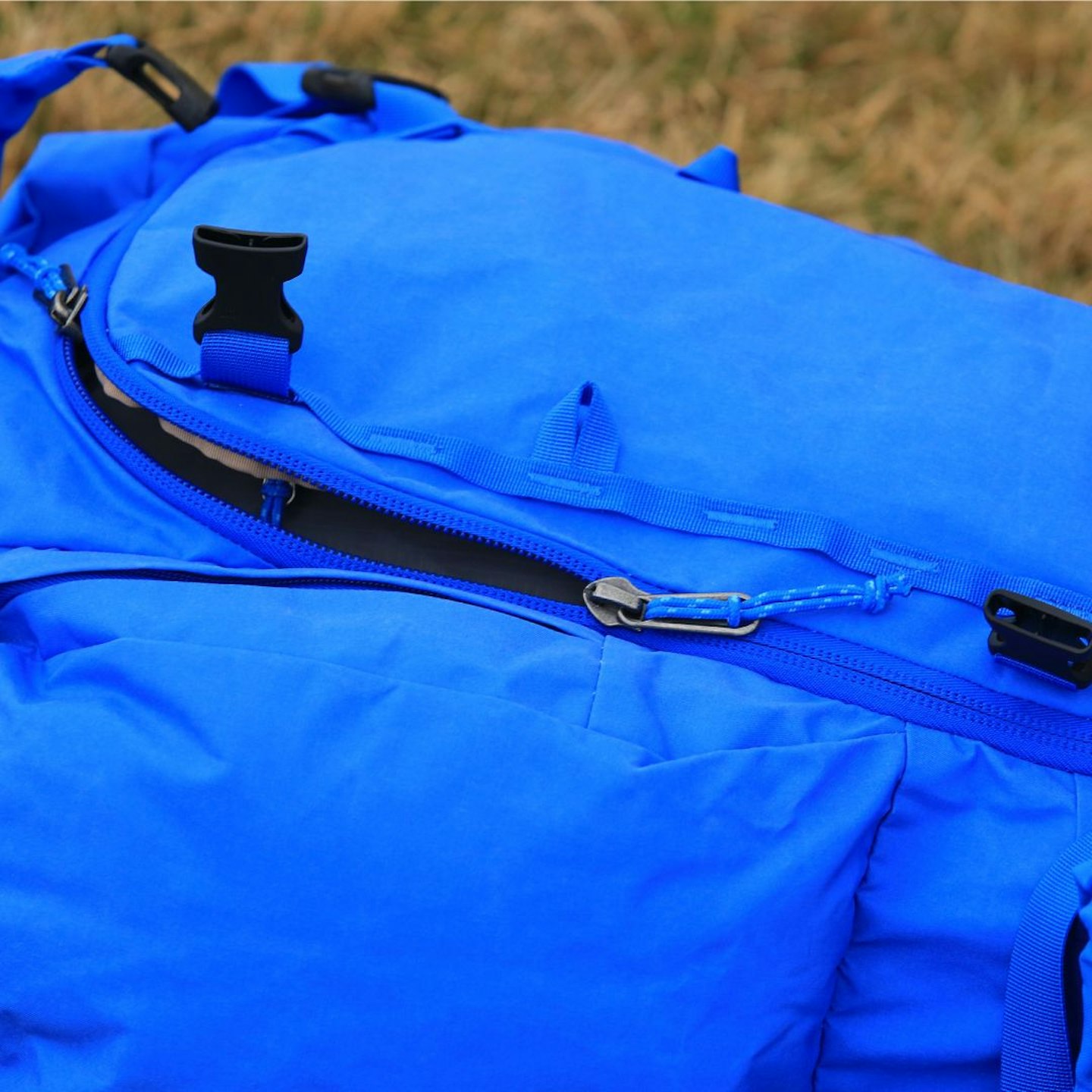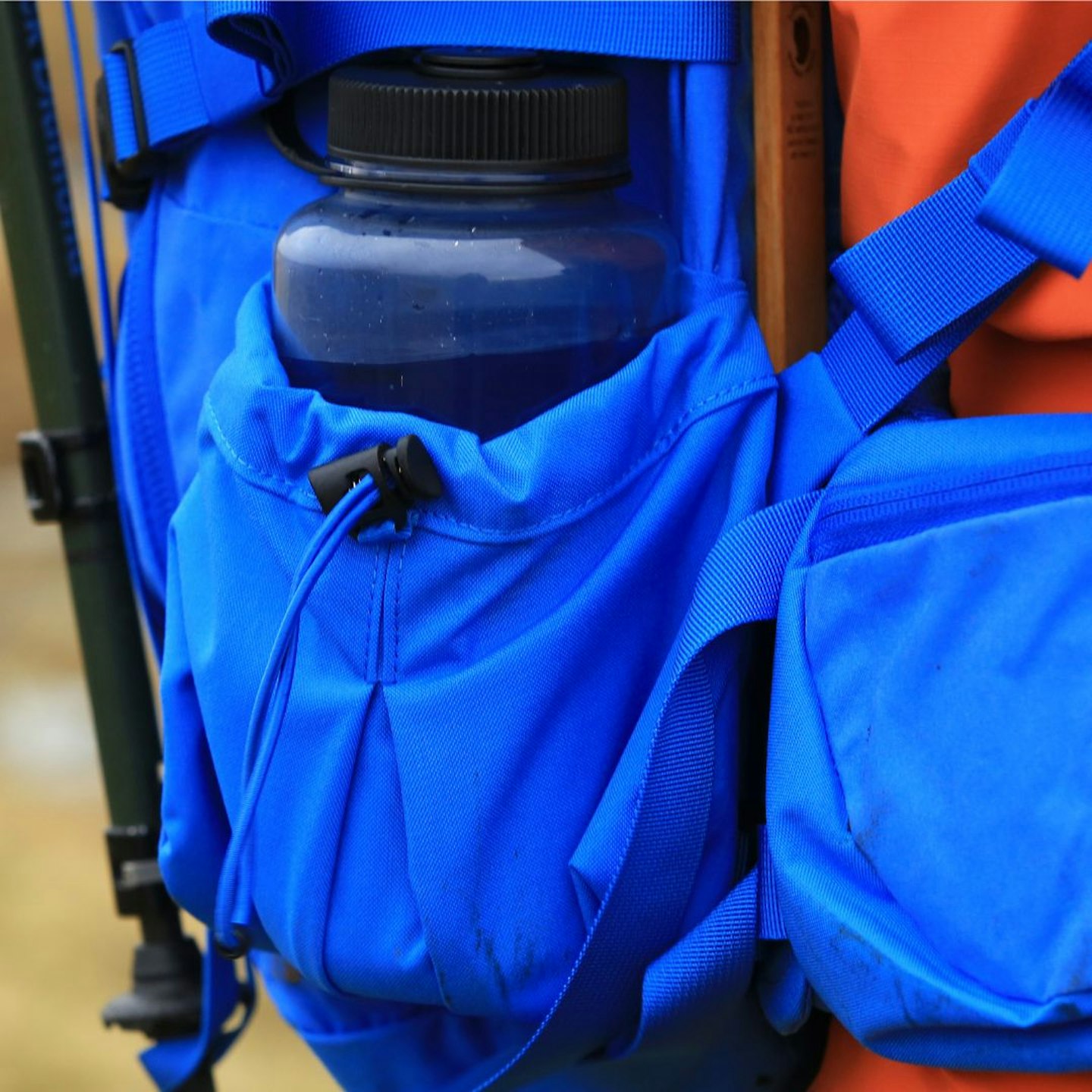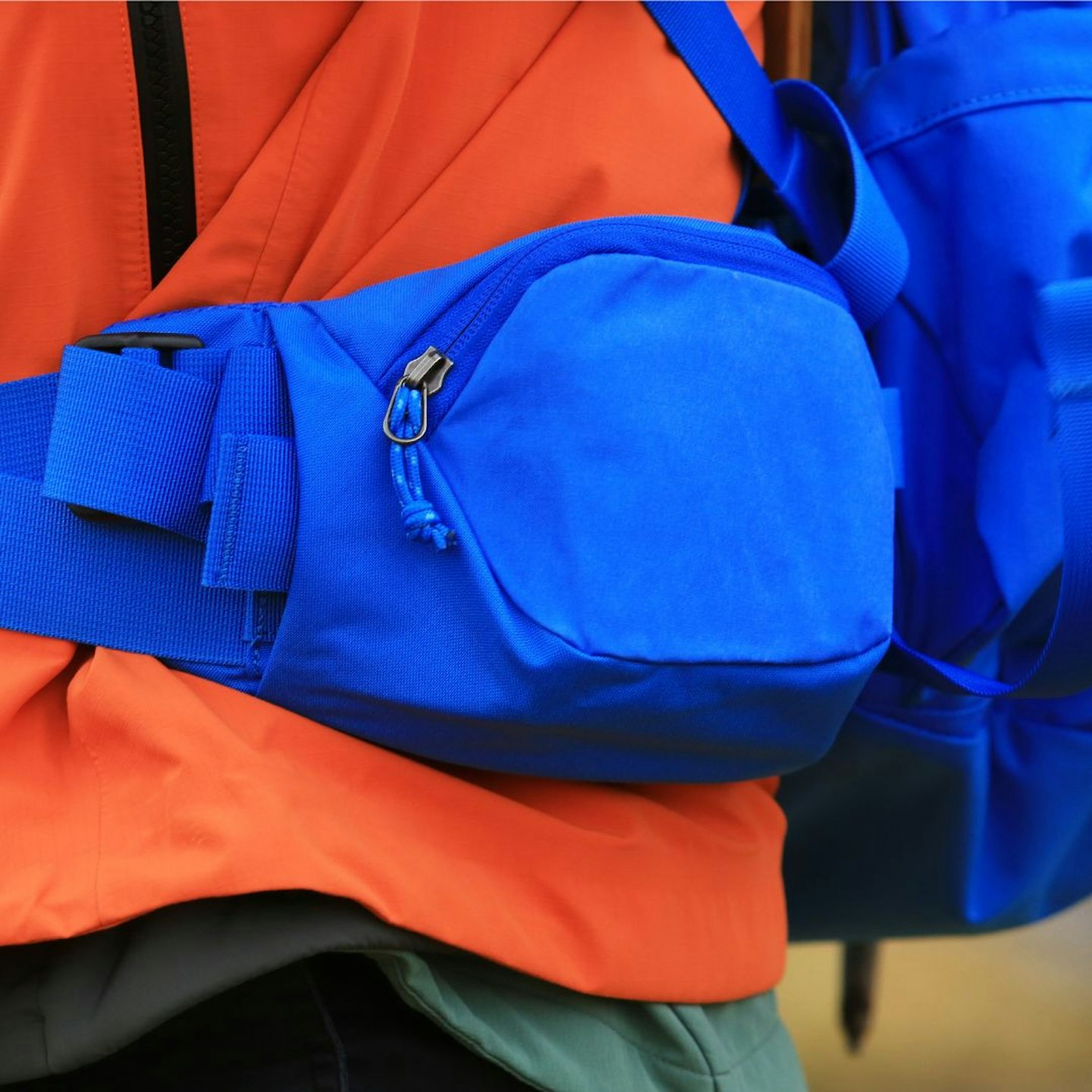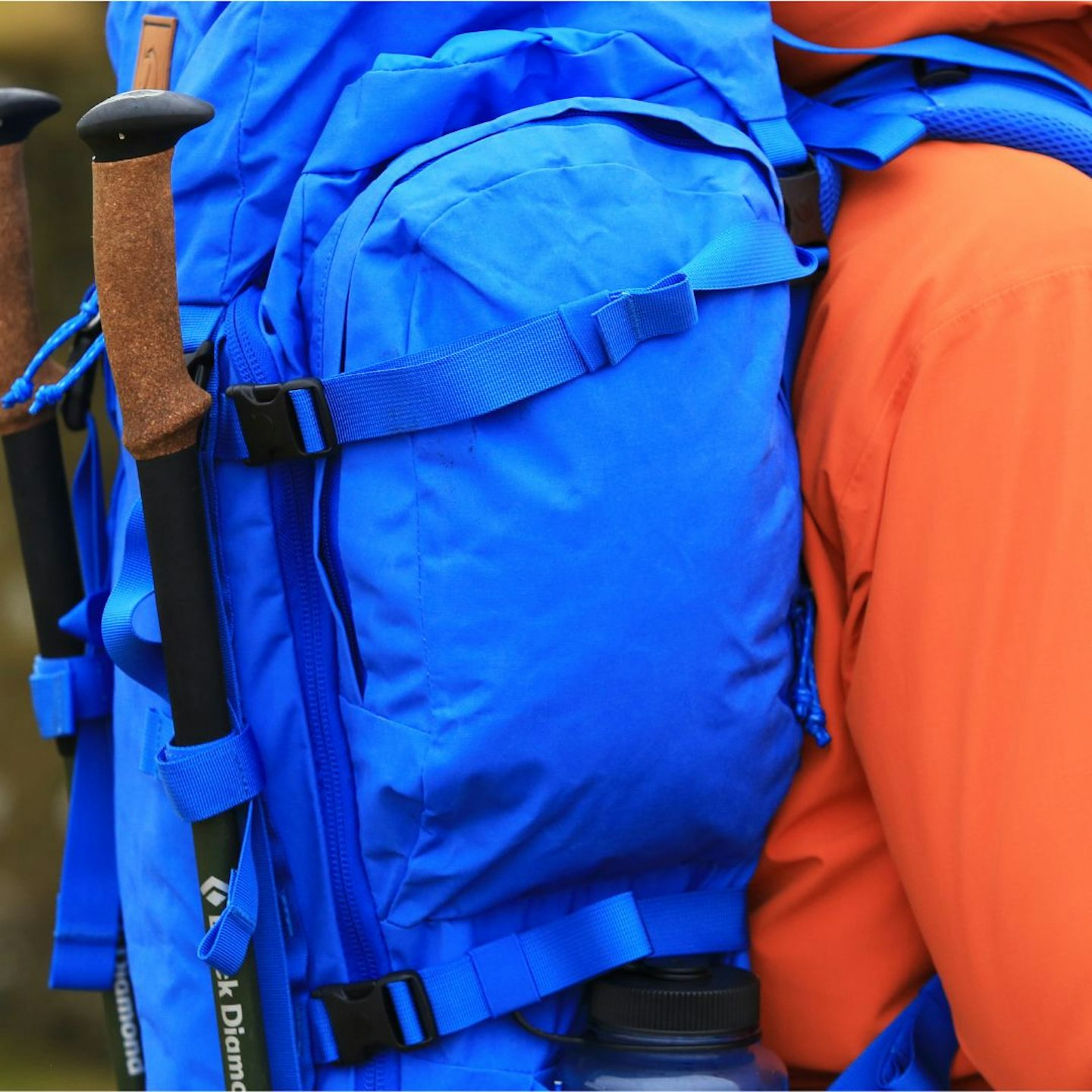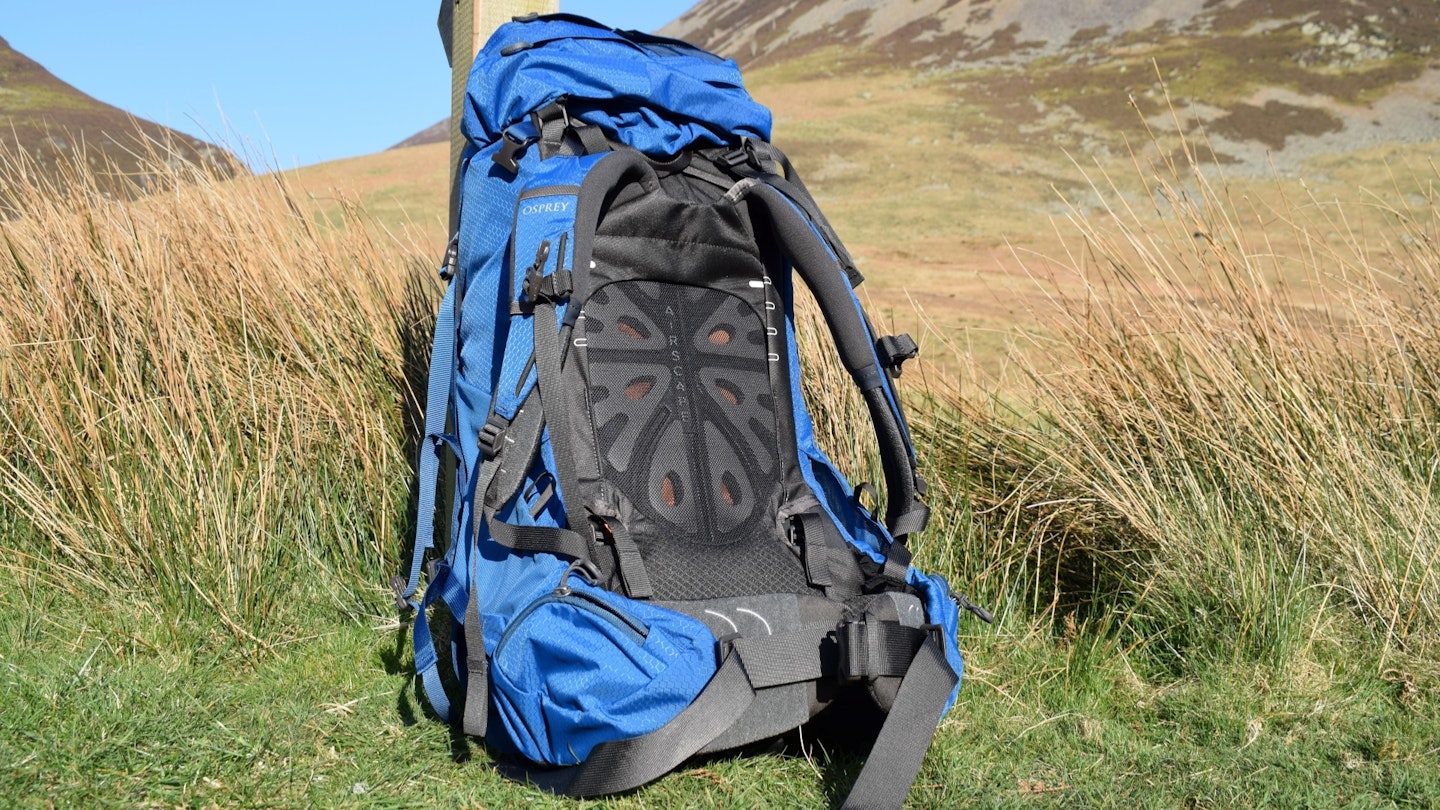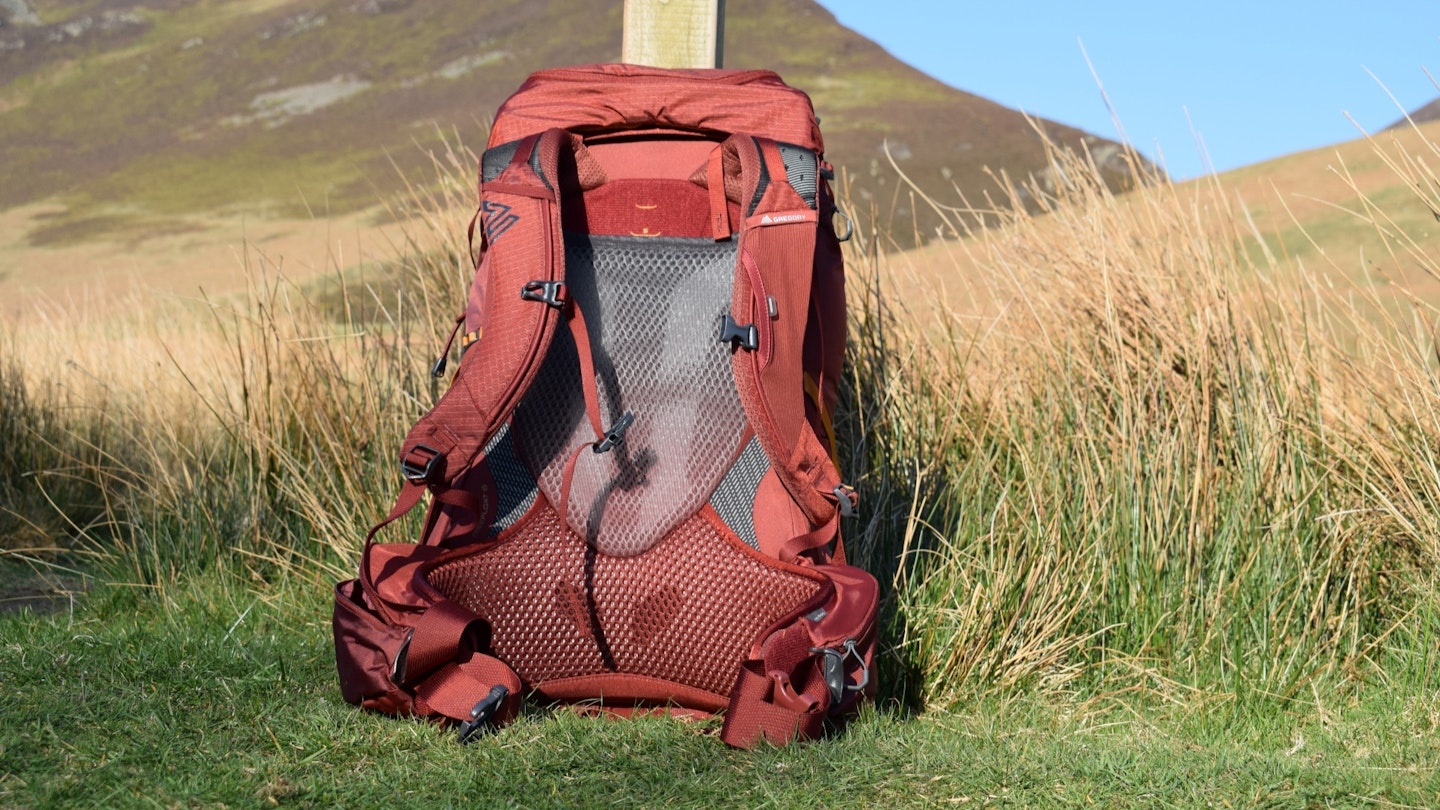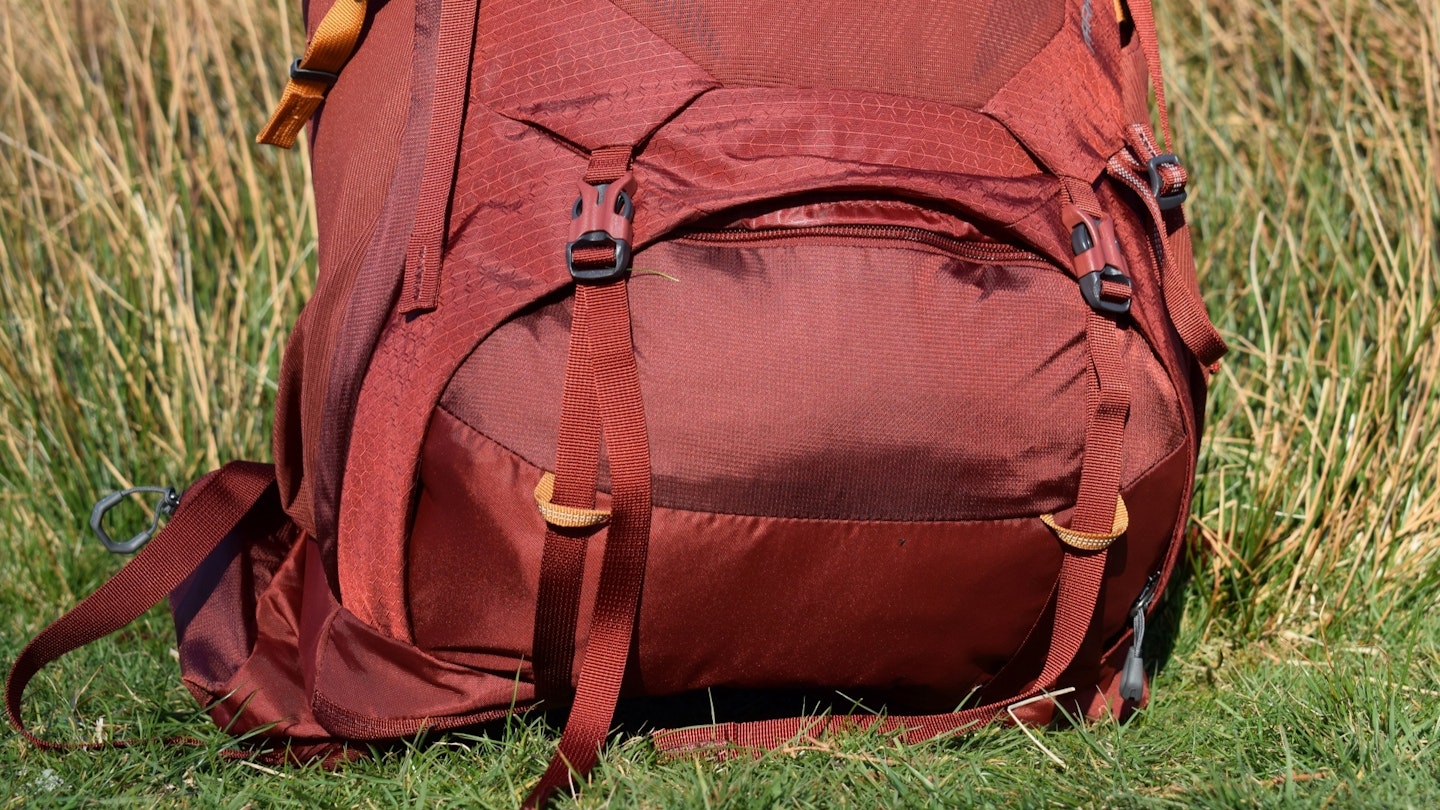As hiking packs grow in volume they seem to become more daunting and ever more technical, and while large backpacking backpacks do incorporate more features than your small daypack, the principle remains the same: to carry your gear comfortably.
It's just with a backpacking backpack, there's more gear to go in it and therefore it requires more thought around weight distribution, comfort and other such things.
Falling within the 'backpacking' sized packs are those at 50 litres or more. This extends to packs up to 100 litres or so, which is an enormous volume variation (see our list of the best hiking backpacks for a wider variety of sizes). But it provides options – cavernous packs for those who need it, down to lighter, more compact sizes for hitting the sweet spot between living comfort and carrying comfort.
The ultimate multi-day packs swallow all your gear with ease yet feel stable and distribute weight properly. They are also well-ventilated and continue to be comfortable day after day.
It’s a lot to ask, and only a few manage to pull it off. To help you find these big capacity champion rucksacks, we've created this handy round-up guide to the best out there right now.
Best backpacking backpacks at a glance
Best backpacking backpack on test: Osprey Women's Eja Pro 55 / Osprey Men's Exos Pro 55
Runner up best in test: Lowe Alpine Yacuri 65
Best value: Gregory Stout 55
Best for durability: Fjallraven Kajka 55
Best lightweight backpacking pack: The Atom+ EP50
Editor's note: This article was last updated in spring 2025 with new reviews and updated buying advice.
How we tested the best backpacking backpacks
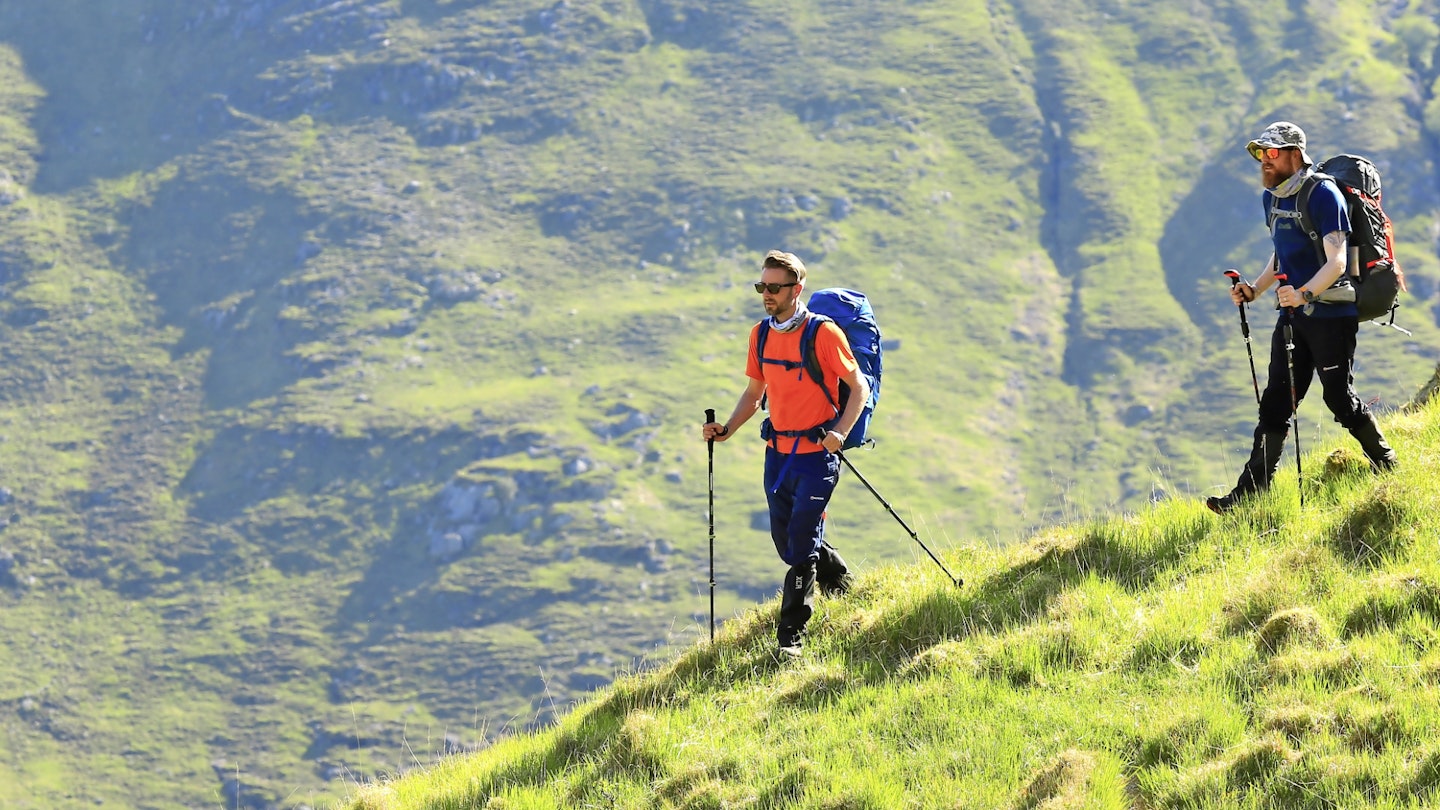
We secured test samples of each pack directly from the brands and used them on backpacking trips over a test period of several months.
The reviewers were Matt Jones and Ellie Clewlow, Live For The Outdoors' and Trail magazine’s regular gear testers. Both are experienced wild campers, backpackers and long-distance walkers.
They’ve completed numerous trails end to end in the UK, including the Pennine Way, the Cambrian Way, the Cape Wrath Trail, the West Highland Way and the Great Glen Way. They’ve also hiked extensively in the US, Spain, Scandinavia and New Zealand.
Matt carried the Deuter Aircontact Ultra 50+5 on the 268-mile Pennine Way and the Highlander Ben Nevis 65 on the 230-mile Cape Wrath Trail, while Ellie carried the Osprey Eja Pro 55 on Cape Wrath.
Other packs were tested on wild camping overnighters and multi-day hikes on trails in Snowdonia, where the pair live and work. This included various sections of the Snowdonia Slate Trail, the North Wales Pilgrims Trail and the Snowdonia Way.
We tested all of these packs against the same criteria, which included features (and how useful they are), the quality of construction, how comfortable they are to carry, how well they performed on multi-day hikes and also value for money.
Best backpacking backpacks reviewed:
Osprey is synonymous with trekking and backpacking rucksacks (with good reason), and continues to showcase its expertise and innovate with the Exos (men's) and Eja (women's) series. Initially launched in 2009 and revamped in 2014, these models remain popular for their lightweight design and carrying comfort.
Having tested the newest additions, the Exos Pro and Eja Pro 55, launched in late 2023, we were amazed at their ability to balance weight and functionality.
Weighing under 1kg, these packs feature the Airspeed suspended back system and are constructed from ultra-light yet surprisingly durable NanoFly fabric that is also PFC-free. They maintain essential features like adjustable fits and adequate storage, though some pockets and padding are minimised.
On our 230-mile test of the Eja Pro 55 on the Cape Wrath trail, the pack was seriously comfortable, even with a 12.5kg load, and the Airspeed system provides very effective ventilation. The fabrics held up well too.
However, some design choices, like compression straps covering pockets, may inconvenience some users. In pursuit of low weight, the Eja/Exos Pro also lacks a rain cover.
Priced at £240 ($290), the Exos and Eja Pro are undoubtedly top end, but you do get what you pay for here and compete well against similar models like the Deuter Aircontact Ultra. They cater to users seeking a balance between ultralight weight and practical features without sacrificing comfort or durability.
Read our full Osprey Eja Pro 55 review for more, or find the men's version of this bag here.
Pros
- Impressively lightweight
- Excellent fit
- Back system has great ventilation
- Durable for a lightweight pack
Cons
- Lacks some features
| RRP: | £240/$290 |
| Weight: | 830g/1lb 13.7oz (Eja Pro 55) | 870g/1lb 15oz (Exos Pro 55) |
| Materials: | NanoFly 100D Nylon x 200D UHMWPE ripstop w/ PFC-free DWR |
| Sizes: | XS/S, M/L (Eja Pro 55) | S/M, L/XL (Exos Pro 55) |
| Volumes: | 55L |
Lowe Alpine, founded by Greg Lowe, revolutionised rucksack design by introducing the first internally framed rucksack and ergonomically contoured shoulder straps. Mr Lowe was also one of the first to engineer packs designed specifically for women, known as the ‘ND’ range. The Yacuri 65 trekking pack embodies these innovations, available in four volumes with women's versions for each.
It features a sturdy 6mm aluminium alloy perimeter frame, a cushioned harness, padded hipbelt, and adjustable back panel, ensuring comfort and stability. On test, the Yacuri 65 proved to be a robust, functional pack with a spacious main compartment and stable, supportive back system.
We liked how easy it was to access gear thanks to a zippered lower section, floating lid, and U-shaped front zip. Naturally, it’s hydration compatible, and equipped with a raincover, multiple pockets, and external attachment points. Built from durable 330D striped dobby fabric and 500D nylon with a water-repellent finish, it’s designed for hard use and stands up to harsh conditions and treatment.
We found that the back system's adjustability for a fine-tuned, tailored fit, while the hipbelt provides comfort and ventilation. Despite being relatively heavy at nearly 2kg, its performance is commendable, offering good airflow and stability. Though, it's still not as well ventilated as backpacks like the Osprey Eja/Exos with a suspended mesh back system.
Sustainability is a focus, with the main fabric containing 49% recycled fibres and Lowe Alpine being a Fair Wear Foundation member and certified climate neutral. With an RRP of £240, the Yacuri is a premium pack but still offers better value compared to pricier alternatives like the Osprey Atmos AG 65 and Fjallraven Kajka 65.
Read our full Lowe Alpine Yacuri 65 review.
Pros
- Very comfortable (three sizes available, incl. women's fit)
- Stable and well-suited for technical treks
- Well thought-out pocket arrangement
Cons
- Reasonably weighty
- Not the best back ventilation
| RRP: | £240/$260 |
| Weight: | 1.96kg/4lbs 5.13oz (reg), 1.99kg/4lbs 5.2oz (L-XL), 1.93kg (women’s/narrow fit ND) |
| Materials: | 330D Striped Dobby (49% recycled) and 500D nylon w/ Hydroshield Coating |
| Sizes: | Regular (48-53cm), L-XL (53-58cm), ND (43-48cm) |
| Volumes: | 38L, 48L, 55L, 65L |
Of all the backpacking backpacks we tested this year, none offered better value for money than the Gregory Stout 55 (men's) and Amber 54 (women's). These are high-quality backpacking rucksacks with an exceptional fit, comfort, and durability, but cost significantly less than most of their rivals.
Gregory’s focus on carrying comfort is evident in the gender-specific fits, adjustable back lengths, and extending hip fins. These packs also offer plus size options with extended shoulder straps and hip belts for larger body shapes.
Both models are available in various volumes, from 34L to 70L, to suit different trip lengths. On test, the Stout 55's robust design stood out to us (it has a perimeter steel alloy frame, fibreglass cross-stay, and HDPE framesheet), and allowed us to comfortably carry loads over 20kg without losing its shape. Made from tough 210D and 420D nylon with a PFC-free water-repellent finish, these packs ensure longevity and protection against the elements.
Key features include the aforementioned adjustable back lengths (VersaFit); generously padded harnesses and padded hip belts with large zippered pockets; and a hydration sleeve compatible with various reservoirs.
This is a top-loader pack but we were happy to see a U-shaped front zip is also fitted, plus a separate bottom compartment, and numerous external pockets. This makes accessing gear extremely easy.
Performance-wise, the Stout 55 and Amber 54 are stable and supportive, making them ideal for multi-day hikes. Though slightly heavier than some competitors, and not as well ventilated as packs with suspended mesh back systems, their durability and carrying comfort are top-notch.
**Read our full Gregory Stout 55 review for more and check out the women's version here.
**
Pros
- Superb fit and comfort
- Loaded with practical features
- Versatile
- Robust
Cons
- Fairly small front pocket
- Ventilation not as good as suspended mesh back systems
| RRP: | £185/$219.95 |
| Weight: | 1.68kg/3lbs 11.25oz |
| Materials: | 210D nylon (40% recycled), 420D high-density nylon, 135D polyester liner, all w/ PFC-free DWR |
| Sizes: | One size (adjustable) |
| Volumes: | Stout: 35L, 45L, 55L, 70L | Amber: 34L, 44L, 54L, 68L |
The Fjällräven Kajka trekking backpack stands as a testament to the brand's unwavering commitment to quality and functionality, despite its rise in outdoor fashion, and showcases the brand's dedication to leisurely, long-distance trekking.
Instead of a traditional aluminium frame, Fjällräven uses birch wood, which boasts a carbon footprint 90% lower than its aluminium counterparts. The use of wood, along with tough, chunky materials and components doesn't do much for weight saving though. At 2.9kg the 55-litre version we tested was at least 500g heavier than most of its rivals.
Despite its weight, the Kajka is brilliantly comfortable, especially with heavy loads. The generously padded back system prioritises comfort over ventilation, which comes back to the focus of trekking at an easy pace.
The other benefit of a heavy duty construction is true longevity. The Kajka is a pack you only need to buy once. That's a big plus point for sustainability too, in addition to the use of recycled materials and being PFC/PFAS-free.
Storage-wise, the Kajka offers ample space with a main compartment accessible via a top drawcord or a front U-shaped zip. Thoughtful features like hipbelt pockets and external side pockets enhance usability, while attachment points allow for more gear and additional accessories.
While its price tag may be eye-popping, the Kajka's performance, features, and longevity go a long way justifying the investment (it's an investment, not just a purchase) for those seeking a high-quality trekking companion. However, budget-conscious consumers can definitely find alternatives at lower price points.
Read our full Fjällräven Kajka 55 review.
Pros
- Impressive carrying comfort with heavy loads
- Easily adjustable back system
- Will last a lifetime
- Sustainable design
- Detachable lid
- Classic looks
Cons
- Not for technical terrain
- Hipbelt pockets don't fit a smartphone
- Heavy
| RRP: | £360/$325 |
| Weight: | 2.88kg/6lbs 5.7oz |
| Materials: | PFC-free Vinylon (recycled 500D nylon), recycled 210D nylon |
| Sizes: | S/M, M/L |
| Volumes: | 55L, 65L, 75L, 85L, 100L |
While bigger brands remain wedded to traditional backpack styles and designs, Atom Packs is a market disruptor with a far more cutting-edge, forward-thinking approach.
Giving a British twist to the US ‘thru-hiking’ movement, the Keswick-based cottage business makes ultralight, highly customisable backpacks with well-thought-out features, tailored sizing options, and a fine balance between weight, durability, comfort and structure.
The off-the-shelf Atom+ EP50 weighs just 675g. It delivers a close-to-the-body carrying experience that’s so comfy and light-touch you almost forget it’s on. Load transfer is good, courtesy of the removable carbon fibre hooped frame (55g) and foam pad (15g). The materials used (EcoPak EPX200, 210-denier Robic Extreema, Dyneema mesh and 500-denier textured nylon) feel tough enough for extended trail abuse, despite being light.
Our favourite features are the shoulder strap bottle pockets, on-the-move accessible side pockets, and huge stretchy stuff pockets.
However, the price is rather high and the ultralight construction isn’t suited to heavier loads over 13.5kg. Some will prefer more stiffness and structure to the back system. Ventilation isn’t particularly strong either. Small batch production also means you may experience wait times for your order to be dispatched.
Read our full Atom Packs The Atom+ EP50 review for more.
Pros
- Incredibly lightweight
- Clever design features
- Tailored size options
Cons
- Patchy availability
| RRP: | £260 |
| Weight: | 675g/1lb 8oz |
| Materials: | EcoPak EPX200 (main and base); 210D Robic Extreema (side pockets, shoulder straps, hipbelt); 500D nylon (backpanel) |
| Load capacity: | Small (15 - 17in), Medium (17 - 19in), Large (19 - 21in), XL (21 - 23in) |
| Volumes: | 40L (EP40), 50L (EP50) |
The Exped Lightning 60 is an unusual beast: a minimalist pack absolutely covered in gear attachment options. With its stripped-back 1,220g build and rolltop design, it’ll appeal to wild campers and long-distance hikers who want flexibility without the weight of unnecessary extras.
There’s no lid, front stash pocket or shoulder strap storage – but in return you get a clean silhouette and a forest of daisy chains, zig-zag compression straps and gear loops to rig up everything from mats to poles.
It’s especially handy for awkward loads or more technical kit. The 60L capacity sits in that sweet spot for multi-day hikes, and the women’s version offers a tailored fit too.
The back system is the real love-it-or-hate-it feature. It uses a T-shaped aluminium frame with two main contact points, creating a kind of ‘floating’ suspension. For some it’ll feel ventilated and supportive; others may find it lumpy or awkward, especially on first use. It’s adjustable, though, so you can dial in the fit.
If you want plush comfort or a classic design, this isn’t the one. But if you’re after a solid, weather-resistant pack that lets you carry your way, the Lightning 60 brings something different to the table.
Read our full Exped Lightning 60 review for more or find the women's version here.
Pros
- Decent price
- Relatively light
- Some nice features
- Good gear attachment options
Cons
- Not the comfiest carry
- Back system may polarise opinion
- No large stash pocket
| RRP: | £185 / $239.95 |
| Volume: | 60L |
| Back size adjustment: | 41-58cm |
| Versions: | 45L, 60L, 45L women’s, 60L women’s |
| Main fabrics: | 210-denier ripstop nylon with PU coating |
| Weight: | 1,220g / 2lb 11oz |
The Osprey Aether 55 is a true beast of burden, built for carrying big loads in comfort, if you can handle the weight of the pack itself. Tipping the scales at 2.18kg, it’s the heaviest backpack in our roundup by a long shot. But that heft buys you a supremely stable carry, a long list of features, and a design made for multi-day epics with a heavy kit list.
The AirScape back system combines a moulded framesheet, foam cutouts, and mesh to deliver a close-to-body fit with decent ventilation and excellent load transfer. It’s adjustable on the go, and the wide hipbelt does a great job of shifting weight to your hips. While it’s not the softest or most ventilated carry, it’s incredibly solid with loads up to 27kg.
Where the Aether really stands out is in its features. There’s a floating lid with twin pockets, a reinforced stash pocket, side bottle pockets with on-the-go access, roomy hipbelt pockets, ice axe loops, a hydration sleeve, and a separate sleeping bag compartment. The durable 420D fabric feels bombproof, and the included rain cover adds a final layer of all-weather utility.
This isn’t a sleek, fast-and-light pack like the Atom or Lightning – it’s a gear-hauling machine for long routes, tough terrain, and heavier base weights. If you’re going big, the Aether’s got your back. Literally.
Read our full Osprey Aether 55 review for more or find the women's version here.
Pros
- High-tech back system
- Loads of top-tier features
- Very durable
- Osprey’s craftsmanship
Cons
- Very heavy
- Expensive
- Doesn’t feel light or agile or streamlined
| RRP: | £199.99 / $299.99 |
| Weight: | 2,189g / 4lb 13oz |
| Volume: | 55L |
| Back sizes: | S/M, L/XL |
| Versions: | 55L, 65L, Ariel 55, Ariel 65 |
| Main fabrics: | 420-denier nylon with DWR |
With a brilliant balance of comfort, load-hauling power and practical features, the Gregory Paragon 50 stands out as a superb midweight backpacking pack – especially for those prioritising carry comfort over cutting grams.
We were particularly impressed by the back system. Gregory’s attention to detail is clear in the contoured hipbelt, plush shoulder straps and breathable AirCushion back panel – all working together to offer a stable, close-to-body fit. It’s designed to handle loads up to 23kg, and while we wouldn’t max that out, it definitely copes well with heavier multi-day setups.
At 1.5kg, it’s not featherlight, and it might feel a bit overbuilt for minimalist hikers. But in return, you get excellent features: a full-length side zip for easy access, a stash of well-placed pockets (including a clever angled bottle sleeve), a raincover and dual compartments with a sleeping bag divider.
This is a pack that feels dialled-in and considered. The adjustable back length is easy to tweak, and the 50L capacity hits the sweet spot for weekend wild camps without encouraging overpacking. It’s not the cheapest option, but we reckon the comfort and versatility more than justify the price.
Read our full Gregory Paragon 50 review for more detail or check out the women's version here.
Pros
- Superb carrying experience
- Excellent back system
- Suitable for heavy loads
- Great features
- Full-length side zipper for easy internal access
Cons
- Quite heavy (1.5kg/1500g)
- Quite pricey
- Some will find it over-engineered
| RRP: | £210 / $239.95 |
| Weight: | 1.5kg / 3lb 4.9oz |
| Volume: | 50L |
| Back Sizes: | S/M, M/L |
| Versions: | 40L, 50L, 60L (women's Maven 38L, 48L, 58L) |
| Main fabrics: | 210-denier nylon with DWR |
Proof that you don’t need to drop hundreds to get a functional, feature-packed rucksack, the Highlander Novar 60+5L is a true budget-friendly gem. At just £99.99, this pack delivers way more than we expected at the price – ideal for newcomers to wild camping or those who want maximum litre-for-pound value.
It’s not a lightweight by any stretch – 2kg is hefty – and you’re not getting premium-grade build quality here. But there’s a real sense of solid functionality: tons of pockets, an integrated raincover, hydration compatibility, and a back system that adjusts to different torso lengths. The harness feels nicely padded, too, making it more comfortable than we anticipated for a budget model.
On the downside, the aluminium stays feel a bit stiff and there’s very little ventilation – so it’s not our first choice for hotter hikes or week-long treks. Still, for shorter trips and more casual backpackers, it covers the essentials without fuss. The adjustable sizing system is easy to tweak, and the ample 65L volume means it’ll swallow a full camping load.
If your priority is saving money while still getting something trail-ready, the Novar’s a no-brainer. It’s not flashy, but it gets the job done.
Pros
- Amazing value for money
- Suprisingly good all-round performance
- Expansive range of features
Cons
- Heavy, with a cheaper build quality
- Fairly basic hardware
- Not the comfiest carrying experience
| RRP: | £99.99 |
| Weight: | 2kg / 4lb 6.5oz |
| Back sizes: | One size only |
| Main fabrics: | 210-denier ripstop nylon with PU coating |
| Volume: | 65L |
- Easy access drawcord system to main compartment
- Duraflex buckles and raincover included
- Adjustable chest strap with whistle buckle
- Dual webbing strap load stabilisation on shoulder straps and hip belt
- Adjustable shoulder straps, hip belt and back system
If you’re aiming for ultralight, the Beta Light 45 is Black Diamond’s lean, mean answer to the thru-hiking crowd. At just 890g, it still manages to cram in 45 litres of volume, making it a fantastic companion for weight-conscious long-distance hikes like the Cape Wrath Trail or Pennine Way.
We found the carry experience to be impressively comfortable for such a stripped-back pack. The shoulder harness is reminiscent of a running vest, hugging the torso with a close, athletic feel that’s surprisingly agile and confidence-inspiring on technical trails. There’s very little in the way of structure or ventilation though, and anyone used to heftier, more supportive packs might find it lacking in stability.
That said, we really enjoyed the simplicity. The Power Mesh stash pocket is massive and genuinely useful, and the hipbelt and shoulder strap pockets offer decent on-the-go storage. The whole thing is crafted from Ultra 200 fabric, which feels premium, tough and water-resistant enough to shrug off a Highland downpour.
It’s far from cheap – and not quite the lightest ultralight pack out there – but if you’re a minimalist at heart and want a fast, streamlined ride with just enough capacity for multi-day adventures, this sleek machine is worth a look.
Pros
- Great running style straps
- Minimalist features
- Feels sleek and streamlined
- Super durable
Cons
- Very expensive
- Over-priced
- Not as ultralight as some other niche brands like Zpacks and Gossamer Gear
| RRP: | £360 / $399.95 |
| Weight: | 890g / 1lb 15.4oz |
| Volume: | 45L |
| Back Sizes: | XS, S, M, L |
| Versions: | 30L, 45L |
| Main fabrics: | Ultra 200 polyester |
If you’re looking to save weight on your next long walk but aren’t quite sold on a minimalist or fully frameless pack, the Aircontact Ultra is a great option. It has a good volume-to-weight ratio but doesn’t sacrifice too many features or carrying comfort.
It’s a classic top-loading design with a floating lid and plenty of external pockets, plus a padded mesh back panel with lumbar support and a wide hip belt. It is braced with a perimeter wire frame and plastic framesheet, providing rigidity and structure. Deuter claims this design ‘traces the curvature of the spine and hips, allowing a 70 per cent load transfer to the hip belt’.
We found that's true to a point. For loads up to about 12kg it carries well, but the shoulder straps aren’t as plush as what we experienced on many of the other backpacking rucksack we tested. That said, they still have a bit of padding and are nicely sculpted. We also liked that the harness moves with your torso rather than feeling like it’s pulling against you.
The main compartment is easy to load, with zigzag side compression straps to cinch in the load. In terms of durability, the main body fabrics are surprisingly tough and performed well on our 268-mile Pennine Way test hike, though the stretch-mesh front and side pockets are vulnerable to snags.
For beating the averages on longer trails like the Pennine Way or the Coast-to-Coast, this streamlined pack would be an agile companion. It's also got good eco credentials.
**Read our full Deuter Aircontact Ultra 50+5 review for more and see the women's version here.
**
Pros
- Lightweight yet still supportive
- Clean, streamlined design
- Quite sustainable
Cons
- Not as well padded as some rivals
| RRP: | £240/$260 |
| Weight: | 1.27kg/2lbs 12.75oz |
| Materials: | Bluesign-approved 235D nylon, 500D nylon (PFC-free) |
| Sizes: | One size (adjustable) |
| Volumes: | 35+5L (SL), 40+5L, 45+5L (SL), 50+5L |
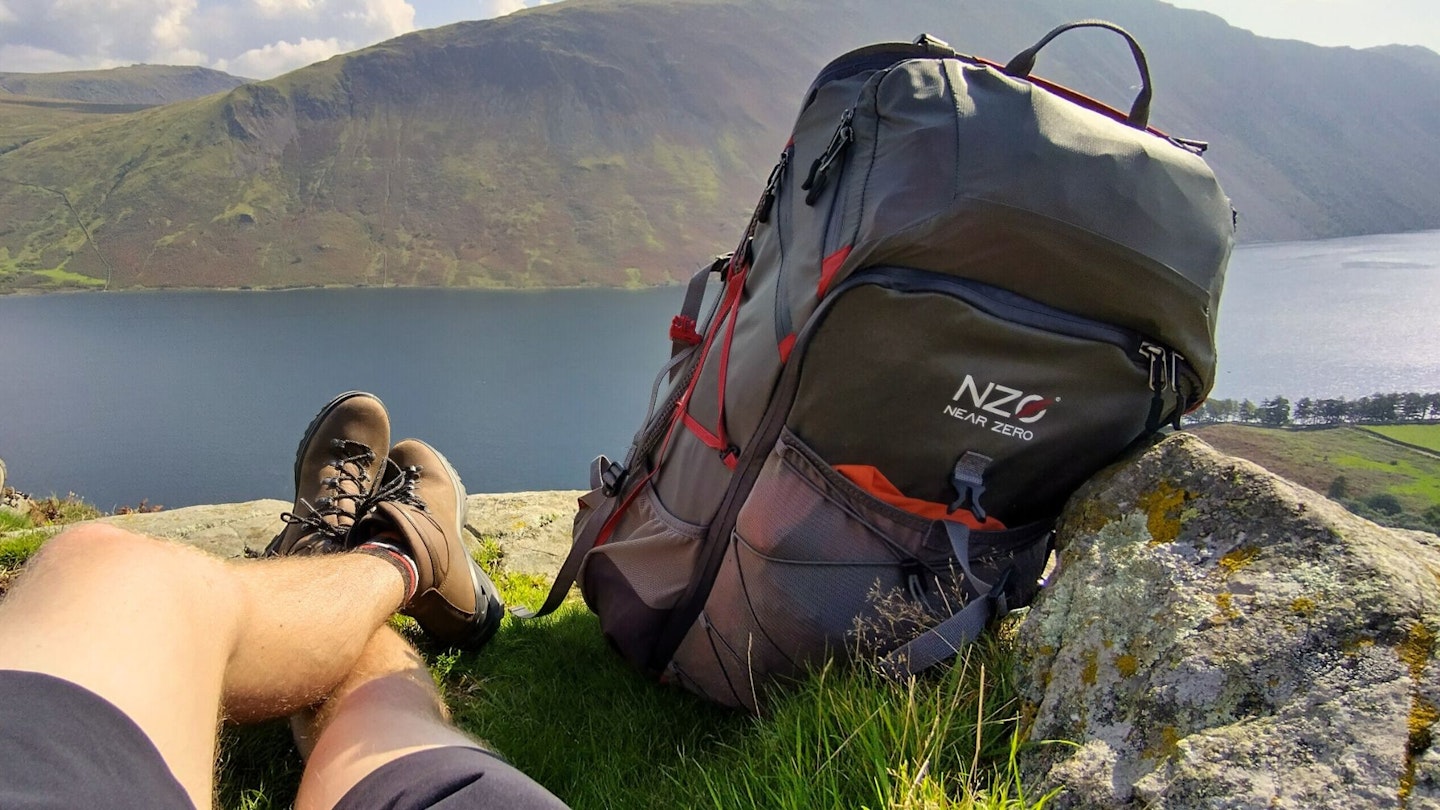 LFTO
LFTOnearzero.co
Arizona-based brand Near Zero takes a unique approach to its overnight pack design. Instead of aiming for the highly technical pack, The Dean 55L is unapologetically simplistic, but not in the sense of being stripped down and basic.
Rather, Near Zero has come up with a novel idea of compartmentalising the main internal compartment, even labelling the compartments so it's easier to pack your gear. The idea, Near Zero says, is to make it easier for keen but new hikers to pack properly for their backpacking adventures.
We've tried The Dean 55L and a Near Zero gear bundle and were mighty impressed with both. Sticking with the pack, it's a comfortable and breathable design, and sits quite close to your back so it' remains stable when the terrain isn't.
It's good value too (not cheap but good value) thanks to the combination of thoughtful, useable internal space, comfort, and quality.
Read our full Near Zero The Dean 55L Backpack review for more.
Pros
- Stable, secure fit
- Fantastic internal organisation
- Reasonably lightweight
- Easy-access front zip
- Good back panel breathability
Cons
- Base material could be tougher
- Hipbelt straps sometimes wiggle out of their storage sleeves
| RRP: | £187/$200 |
| Weight: | 1.7kg/3lbs 11.9oz |
| Volumes: | 55L |
| Sizes: | One size (adjustable) |
| Materials: | Water-resistant ripstop nylon |
How to choose the perfect backpacking backpack
Capacity
For a big walk (days or even weeks) you’ll need 50+ litres. Whether you need 55L or 100L (or anything in between) comes down to what you're taking. Are you trekking in colder weather? Are you taking creature comforts? If you answer affirmative to questions like these, you'll be hiking with more gear and therefore need more volume.
Manufacturers calculate volume by filling a pack with 20mm plastic balls, then placing them in a volumetric cylinder for measurement. Most brands include the pockets, while others maximise volume by unrolling storm collars and roll-top closures.

Back sizes
To ensure a good fit, many packs now come in different sizes including women’s-specific versions. Others feature a length-adjustable back panel. To find your size, calculate your back length by measuring from your C7 vertebra (the bony bit at the back of your neck) to your iliac crest (the top of your hips) and use this to establish what back length you need.
Back systems
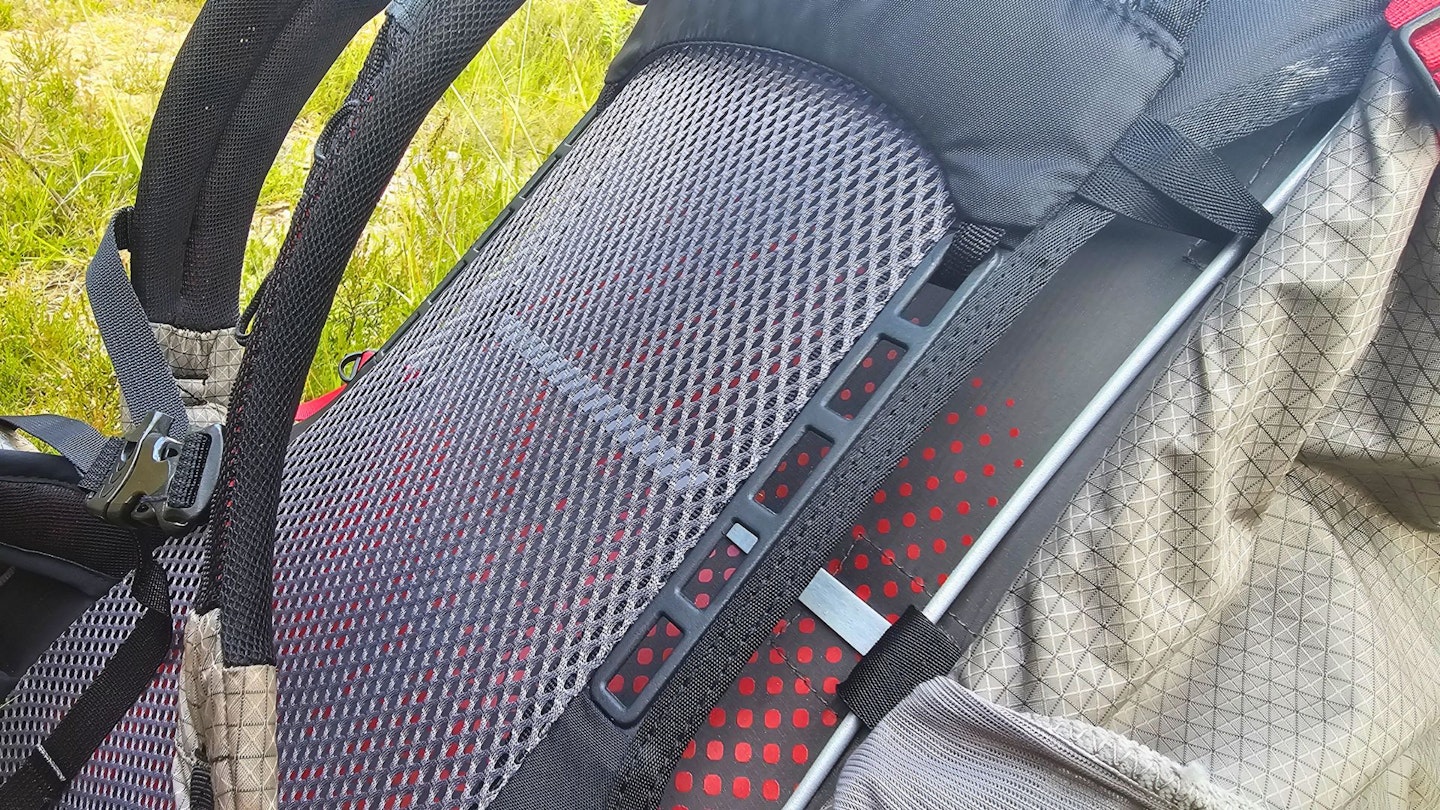
A back system is all about balancing comfort and ventilation with load stability.
The suspended mesh system (like Osprey's AirSpeed design) are the most breathable. They hold the pack away from your back with a mesh panel that creates a gap between your back and the pack, which helps to stop you from getting sweaty. The trade-off is that because the load is held away from your back, they're not the most stable.
Other designs hold the pack closer to your body and have highly padded back panels and straps. Comfort and stability is better than suspended mesh designs but aren't as breathable. To address this, some employ channels or vents interspersed with padded areas for enhanced comfort.
More technical backpacking backpacks tend to keep the weight close to your body for better stability and load transfer.
Harnesses and shoulder straps
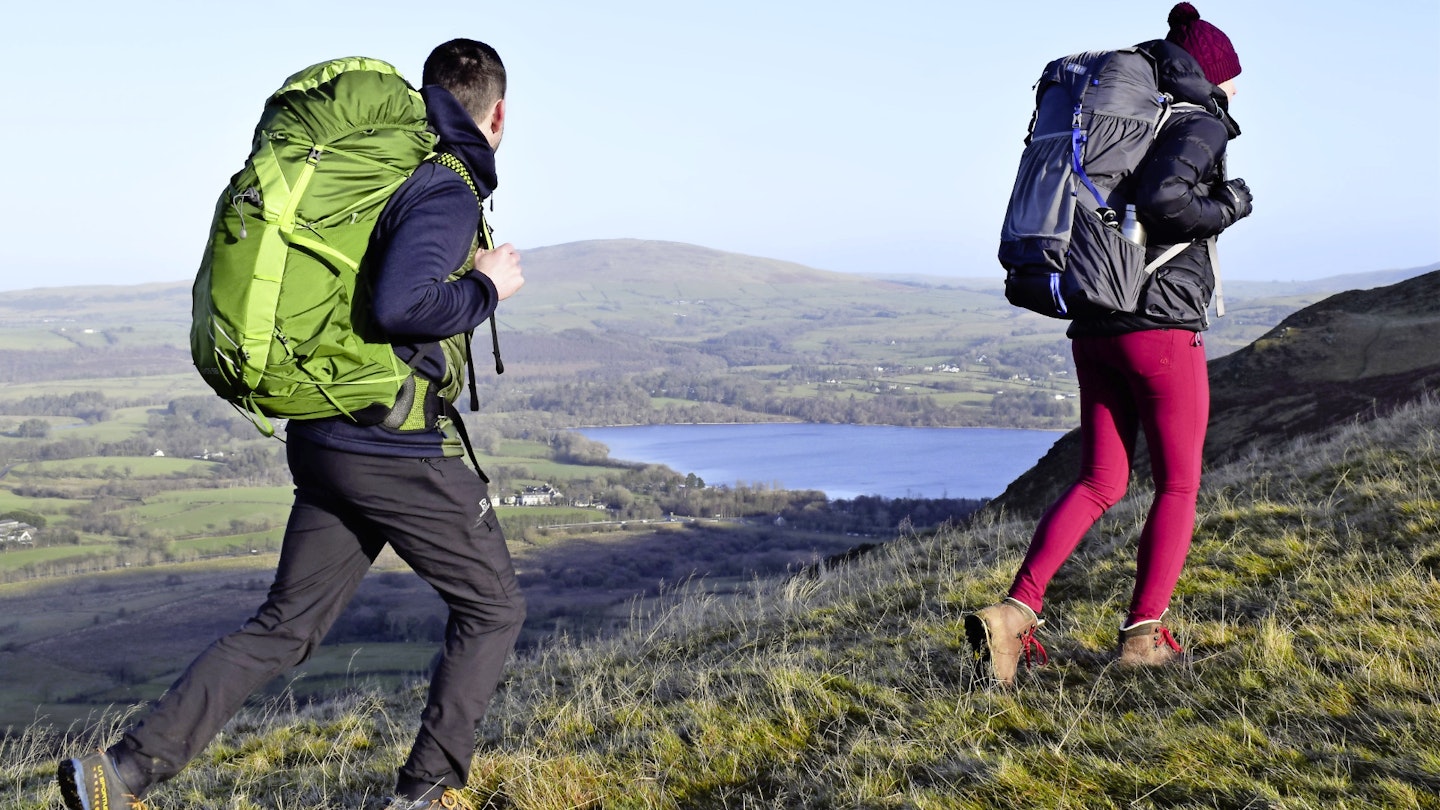
The shoulder straps, hip belt and chest strap form the harness, which is key to carrying comfort and load stability. Look for padded, contoured straps and a supportive hip belt. Your hips should take most of the weight. Many harnesses also feature perforated foam or mesh to improve ventilation.
Is a front zip or top drawcord opening best?
Access is usually via a top drawcord with a lid and buckle over it, though some use a roll-top closure. A roll-top saves weight and is very weatherproof, but a lid usually offers more storage. Floating lids attach to the pack via adjustable webbing straps. This allows you to ‘overstuff’ the top of the pack to carry extra supplies.
But to make access to the main compartment easier, many larger packs have a side or front zip, plus a bottom compartment, separated from the main section via a zipped divider. The latter is often a handy place to store your sleeping bag.
Additional features
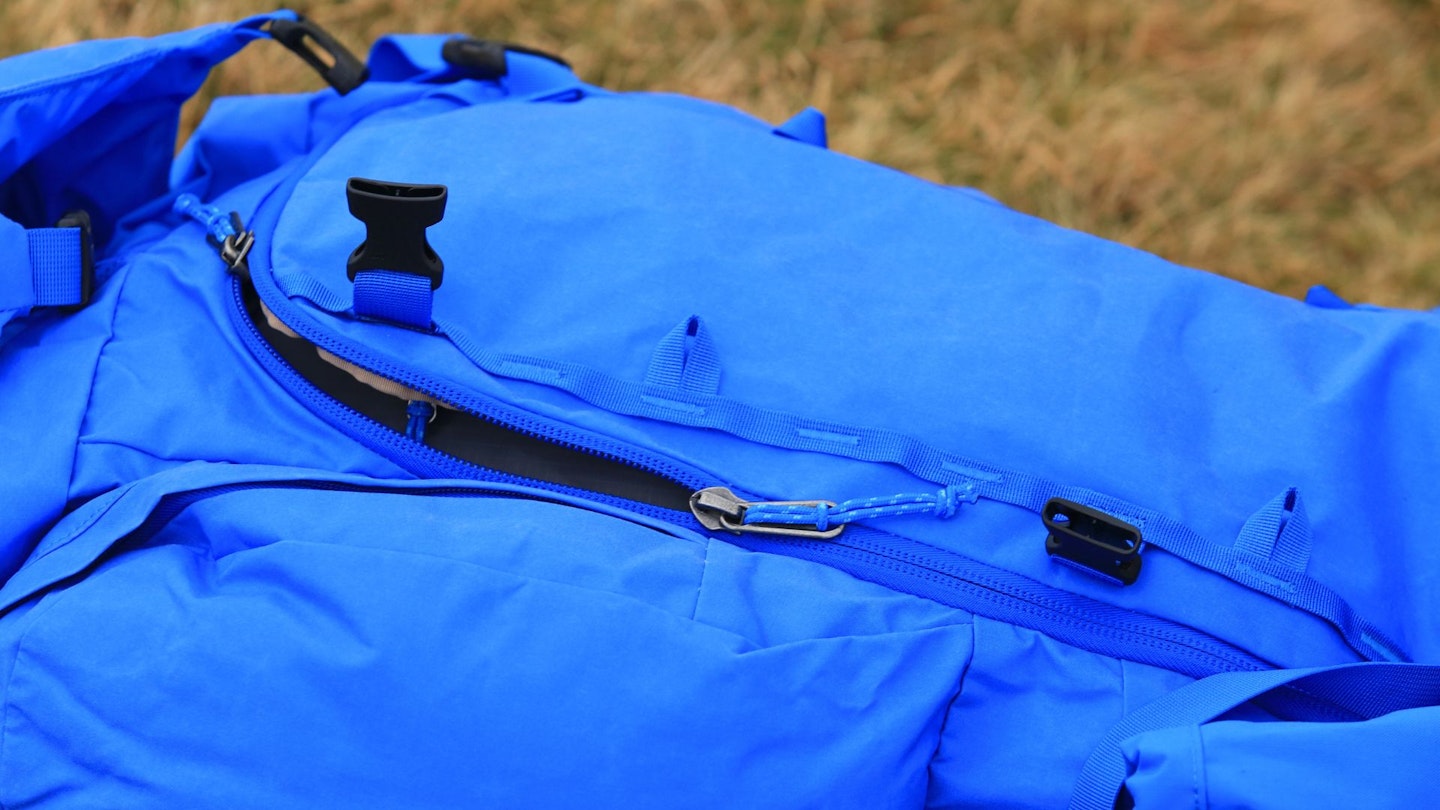
External pockets: A front stretch pocket is useful for stowing extra layers. Side pockets are good for water bottles. Hip belt pockets are handy for snacks and tech devices, as is a lid or top pocket.
Compression straps: Most packs have compression straps or cords to cinch in the load for added stability. They can also be used to carry extra gear on the outside of the pack or underneath the lid.
Trekking pole attachments: Virtually all backpacking backpacks have external webbing or bungee cord loops to attach trekking poles and/or ice axes.
Hydration reservoir pocket: Planning to use a flexible hydration reservoir and hose? Most rucksacks have provision for a water bladder. This often looks like a hook and elasticated pouch inside the bag, or a dedicated compartment behind the main opening of the pack. There will then be an opening for the hose to thread through.
Frequently asked questions
Should my backpack have a frame?
In most cases, yes and it is necessary for those wanting to carry 12+kg. The frame provides load-carrying rigidity and stability. Lightweight packs may have just one or two metal stays, a plastic framesheet or even be completely frameless, whilst more conventional packs have an internal perimeter frame.
What's the best backpacking brand?
That's a hard one to answer, as people often have their personal favourites. Among the more popular brands you'll find Osprey, Lowe Alpine/Rab, Gregory and Deuter. If we haven't mentioned a brand here, that's not to say it doesn't make very good kit.
Is 70L too much for backpacking?
In some cases a volume of 70 litres is going to be overkill, but it depends on how long you're hiking for and how lightweight/packable all of your gear is. Most people should be fine with 50-65L for a handful of days, but 70L is helpful if you're not able to resupply mid-walk. Just don't feel like you need to fill every single bit of space!
What's the difference between a backpacking backpack and a hiking backpack?
The phrase 'hiking backpacks' can cover everything from small daypacks right up to expedition-size gear haulers with over 70L of storage. Essentially, it's any pack that's designed to be carried on a hike. Meanwhile, 'backpacking backpacks' refers to bags with a larger capacity, which makes them suitable to backpacking (or multi-day hiking), when you may need to carry all of your camping kit with you.
How do I clean a backpacking backpack?
Although made from tough and durable materials, hiking packs need to be cleaned occasionally to maintain those materials in top condition. Neglect leads to accelerated degradation (and often a gross pack).
Fortunately, cleaning your pack properly is easy. It needs doing every season or after heavy use and requires the right cleaning product.
Backpacks are also one of the most repairable pieces of outdoor equipment. So, if a zip is busted, a buckle broken, or a piece of fabric torn, make use of the repair services offered by retailers, brands, and specialist agents like Lancashire Sports Repairs to get your pack fixed. It's far more cost effective and eco-friendly than throwing away and buying new.
Best backpack care kit
Grangers' effective and eco-friendly care kit for outdoor gear such as packs and tents. The cleaner is self-explanatory, but the Tent And Gear Repel UV revitalises equipment's water-repellent coating and adds some UV protection. The kit even comes with a sponge to help apply the cleaner solution. The Cleaner and Repel are available to buy individually too.
Pros
- Water-based and PFC-free
- Easy spray-on water repel
- Good value
Cons
- Reproofing spray needs applied quite regularly
Highly recommended
Nikwax's gear care kit is just as good as the Grangers kit and also water-based and PFC-free. SolarWash and SolarProof are available to buy individually.
Pros
- Water-based and PFC-free
- Dry bag included
Cons
- Reproofing spray needs applied quite regularly
Your testers

Matt Jones and Ellie Clewlow are outdoor writers and photographers with a passion for adventure. They have completed multiple long-distance backpacking trails in the UK, including the West Highland Way, the Pennine Way, the Cambrian Way and the Cape Wrath Trail. They live and work in the heart of Eryri (Snowdonia), North Wales.




